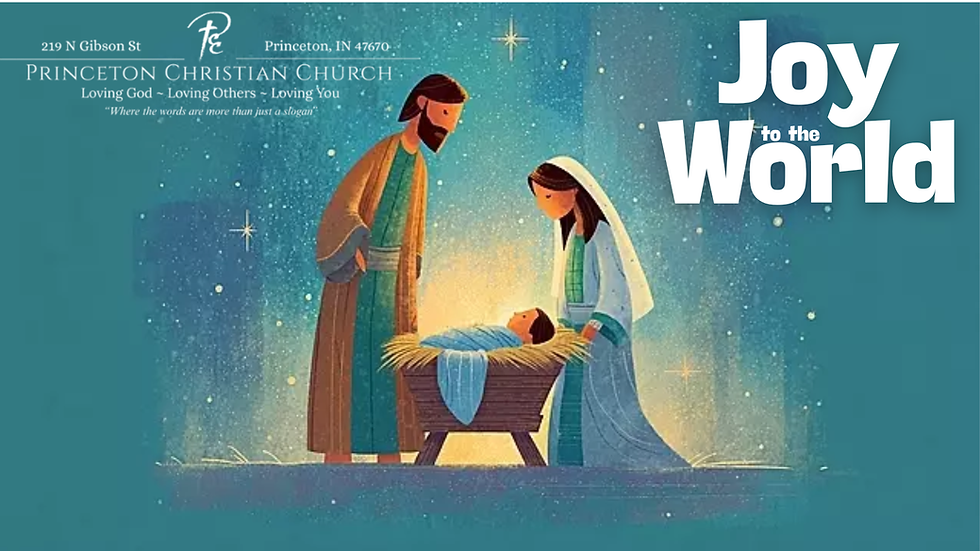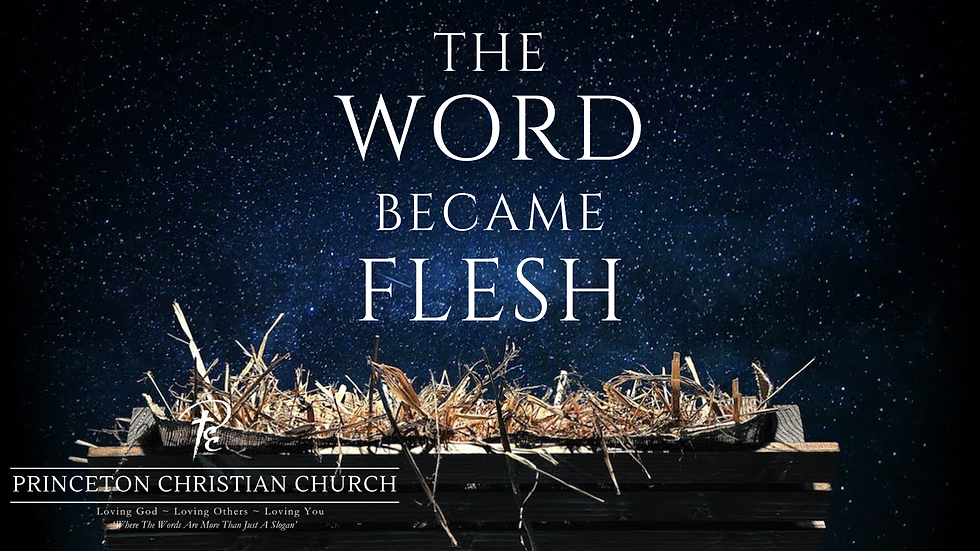GOD’S PLAN FOR SPIRITUAL UNITY
- Princeton CC

- Oct 31, 2021
- 5 min read

LAFS – GOD’S PLAN FOR SPIRITUAL UNITY
John 17-20-23 Princeton Christian Church 31 October 2021
In this 17th chapter of the Gospel according to John, Jesus prays for Himself, verses 1-5. Then He prays for His 11 close followers, noting that only one of the 12 had been lost., verses 6-19. And finally, He prays for us, verses 20-23.
Jesus prayed that all those who follow Him might be as one. He prayed this so that the world might believe that God had sent Him into the world.
The church has not been fully successful throughout history in finding that unity. In God’s eyes, there is one Body. In our eyes, we see many bodies in the world of Christianity. How can we find a practical and a Scriptural unity in the church?
Two ways have been tried. First, there is Ecumenism, which proposes that all denominations, or factions, can come together to find that unity. The second is Sectarianism which proposes that all factions separate and go their own way. Neither of these methods has been found practical or Scriptural.
Groups of Christians are still divided, not unified. The one recognizes as brothers those who practice a version of Christianity that excludes Scriptural teaching.
The Scriptural plan, however, will work because it is God’s plan, not man’s plan. God’s plan can be seen as L A F S. Now don’t think I am saying God’s plan is laughable.
Here is what L A F S is: Love, Acceptance, Forgiveness, and Service. That is God’s plan for unity. It will create and produce unity when it is put into practice.
Let’s look at those 4 steps to Scriptural unity.
The first step to Scriptural Unity is L – Love
See Colossians 3:14 – Paul teaches there that God’s chosen people must put on some clothing. These will include compassion, kindness, humility, gentleness, and patience. We are to bear with one another, forgive one another. And, overall those, put on love to bind them all together in perfect unity.
So, love is the binder – the all-embracing attitude that makes the whole plan of unity possible. Love and unity ate used in Scripture almost interchangeably. See John 17:23; John 13:35 where Jesus says: “By this the world will know that you are My disciples if you love one another.”
Love is an attitude that results in action. Love is more than emotion. Love is a way of treating others more than it is a feeling.
How far do we extend our love? We are willing to lay down our lives for our brothers and sisters in Christ. This is how we know what love is: Jesus Christ laid down His life for us.
Love is sharing material possessions with those in need. 1 John 3:17 asks the question, how can the love of God be in a person who will not take pity on someone who is in need? John goes on in the 18th verse when he says: “Let us not love with words or tongue., but with actions and in truth.”
Agape love treats brothers as brothers and sisters as sisters, no matter how we feel personally about them. It is putting even enemies above ourselves. The best way to conquer an enemy is to treat him as a friend – overcome evil with good as Paul teaches in Romans 12:21.
Love is not a feeling – which is something we cannot control – but it is an action – love is doing. Love is something we do.
The second step toward Scriptural Unity is the A in LAFS. That is Acceptance. Romans 15:7 tells us to:
“Accept one another, then, just as Christ accepted you, in order to bring praise to God.” A person who is in fellowship with Christ must be accepted as our brother. We can only use those things God has made tests of fellowship. His Word spells out conditions for salvation and sonship.
What Scripture says is necessary for salvation is also necessary for unity – nothing more, nothing less. For example, does Scripture say we must understand the Millennium to be saved? If so, a multitude of people are not saved. But does Scripture teach that those who believe the Good News and are immersed into Christ will be saved? Yes, it does. If Scripture teaches it, we must accept it and strive toward unity.
So, we must search the Scriptures. If someone has met those conditions God has put on our salvation, we must accept him as our brother. However, disagreement on other issues does not put him out of the family.
The third step toward Scriptural Unity is the F in LAFS – Forgiveness.
Accepting one who disagrees with me is one thing but accepting one who has hurt me is something else. Colossians 3:13 gives us some insight into this situation. “Bear with one another and forgive whatever grievances you may have against one another. Forgive as the Lord forgave you.”
Forgiveness is not the healing of the wound. That is the job of time. Forgiveness is how I treat that person in spite of the wound.
This s the way God forgives us. He is still hurt by our sin. He treats us as though we did not sin because Jesus died and paid the price. We must forgive others for the same reason --- because Jesus has paid the price for our sins.
Forgiveness is not based on anyone deserving it. It is, instead, based on grace. Remember what Jesus teaches us in Matthew 18:21-35. This is the Parable of the Unmerciful Servant. The servant demanded to be paid back and acted unmercifully against the one who had not repaid what he owed. Jesus summed up His teaching on forgiveness in verse 35 when He said that His Heavenly Father will treat us – unmercifully – if we are not willing to treat others with mercy.
We forgive, not because the hurt is healed, but because the blood of Jesus Christ has covered that person’s (and our) sins.
Step number four toward Scriptural Unity is the S in LAFS. This is Service.
Service is an extension of the first step – love. An extension of love. Serving is visible to the world. It is a way of combating criticism. Those who are criticizing are most likely the ones who are doing the least work.
Being active in service reduces criticism. Workers do not have time to criticize. Workers realize how difficult it is to always do everything right and in a way that is pleasing to everybody. Serving tends to make one humble in his or her attitude toward the shortcomings of others.
Unity requires that God’s people work together in service to the Lord. We are told in Ephesians 4 that leaders are charged with equipping the church. They are to build up the Body of Christ. But, in addition, each part of the body must do its share of the work.
Nothing brings the Body closer together than working, performing service to the Lord for a common purpose.
The Christian community of the first century offers a challenge to us today. They were threatened with division in many ways, but “they maintained the unity of the Spirit through the bond of peace” as Paul teaches in Ephesians 4:3.
We can recover that visible unity if we will. May our hearts echo the prayer of Jesus in John 17:21, “that all of them may be one, Father, just as you are in me and I am in you. May they also be in us so that the world may believe that you have sent me.”
It all begins with a single, individual commitment to Christ, the initial stepping out to accept Him as your Lord and Savior.




Comments